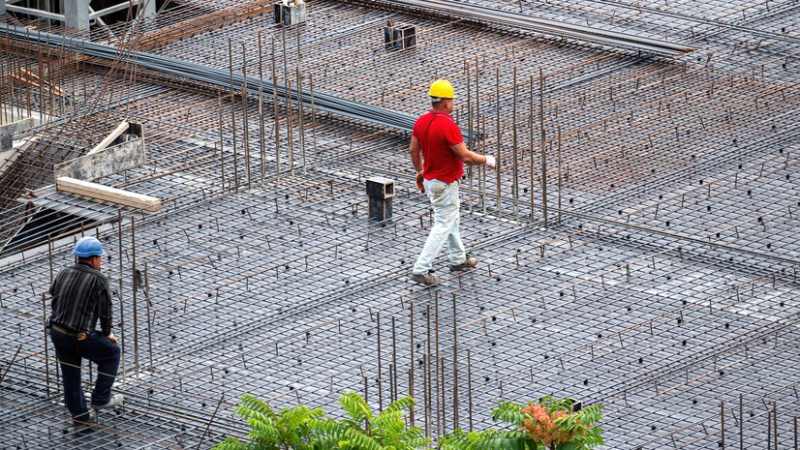Introduction:
Before going deeper into Diaphragm Wall Construction Steps let’s understand more about Diaphragm Walls. They are crucial elements in various civil engineering projects, providing structural support and stability in deep excavations. Understanding the construction steps involved in building diaphragm walls is essential for engineers, contractors, and stakeholders alike.
In this comprehensive guide, we explore the diaphragm wall construction steps, & emphasizing their importance and intricacies.
- Preliminary Investigations and Design:
Before commencing diaphragm wall construction, thorough preliminary investigations are conducted to assess soil conditions, groundwater levels, and structural requirements. Geotechnical surveys, soil testing, and structural analysis are performed to determine the optimal design parameters for the diaphragm wall. Factors such as depth of excavation, lateral earth pressures, and site constraints are considered during the design phase to ensure the stability and integrity of the structure.
- Site Preparation and Excavation:
The construction site is prepared by clearing vegetation, debris, and any obstructions that may hinder excavation activities. Access roads and temporary support structures are built to facilitate construction equipment and personnel movement. Excavation for the diaphragm wall trench begins using specialized machinery such as hydraulic grabs or clamshells mounted on crawler cranes. The trench dimensions are carefully controlled to meet the design specifications, including width, depth, and verticality.
- Slurry Installation and Trench Stabilization:
As the excavation progresses, a bentonite slurry is continuously circulated within the trench to stabilize the surrounding soil and prevent collapse. The slurry acts as a support fluid, exerting hydrostatic pressure against the trench walls to maintain stability during excavation. The composition and density of the slurry are carefully monitored to ensure optimal trench stability and prevent seepage of groundwater into the excavation.
- Reinforcement Cage Installation:
Once the trench reaches the required depth, steel reinforcement cages are lowered into position. These cages, typically composed of interconnected vertical and horizontal reinforcement bars, provide structural integrity and reinforcement to the diaphragm wall. The configuration and spacing of reinforcement bars are designed to withstand anticipated loads and lateral earth pressures while ensuring proper embedment within the concrete.
- Concrete Placement:
With the reinforcement cages in place, concrete placement begins using specialized equipment such as tremie pipes or bottom-up pouring techniques. The concrete is carefully poured into the trench from the bottom up, displacing the bentonite slurry and ensuring uniform filling of the entire depth. Vibrators may be used to consolidate the concrete and eliminate voids, ensuring proper bonding between the concrete and reinforcement bars.
- Panel Construction and Joint Formation:
Diaphragm walls are typically constructed in individual panels, with construction joints formed between adjacent panels to create a continuous wall. After the concrete has cured sufficiently, the excavation process resumes to create the next panel. Construction joints are carefully prepared to ensure proper bonding between adjacent panels, typically by roughening the concrete surface and applying bonding agents or interlocking shear keys.
- Quality Control and Testing:
Throughout the diaphragm wall construction steps, stringent quality control measures are implemented to monitor materials, construction techniques, and structural performance. Non-destructive testing methods such as ultrasonic testing, integrity testing, and cross-hole sonic logging may be employed to assess the integrity and continuity of the diaphragm wall. Any deviations or defects are promptly identified and addressed to ensure the final structure meets design specifications and safety standards.
- Backfilling and Completion:
Once all panels of the diaphragm wall are constructed and tested, backfilling operations commence to fill the excavated area behind the wall. Suitable backfill materials are selected based on engineering requirements and environmental considerations, ensuring adequate drainage and compaction to minimize lateral pressures on the wall. Upon completion of backfilling, surface restoration, and landscaping activities are undertaken to restore the construction site to its original condition.
Conclusion:
In conclusion, diaphragm wall construction steps involve a series of meticulous steps aimed at achieving structural integrity, stability, and performance in deep excavation projects. From preliminary investigations and design to concrete placement and quality control, each step plays a crucial role in the successful execution of diaphragm wall projects. By adhering to best practices, employing advanced construction techniques, and prioritizing safety and quality, engineers and contractors can ensure the timely and efficient completion of diaphragm wall structures that meet the needs of modern infrastructure development.
Hindustan RMC’s expertise in supplying high-quality concrete for construction projects, the journey of diaphragm wall construction is fortified with reliability and efficiency. By seamlessly integrating Hindustan RMC’s superior concrete into the meticulous steps of diaphragm wall construction, engineers and contractors can enhance structural integrity, ensure stability, and elevate performance in deep excavation endeavors. With a commitment to excellence, adherence to best practices, and a focus on safety and quality, the partnership between Hindustan RMC and diaphragm wall construction endeavors paves the way for the seamless realization of robust infrastructure projects, contributing to the advancement of civil engineering and the built environment.







